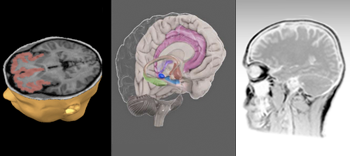Brain Imaging
A recent study suggested that neurofeedback training via functional MRI, or fMRI, could improve brain connectivity in people with Autism Spectrum Disorder, or ASD. Explore this page to learn more about brain imaging techniques for ASD.

Autism Spectrum Disorders (ASDs) are a constellation of psychological conditions that share common behavioral effects. It is clear that the direct cause of the affected behaviors is changes in how the brain of a person with ASD is put together and how it functions. Researchers have been using brain imaging studies to look for changes in the brains of people with ASD since the early 1960s. However, the past 15 years have been marked by the development of new brain imaging techniques and by an ever-growing interest in using these techniques to study autism. In the past 50 years, approximately 1,500 research papers have been published about studies of the brains of people with autism. The same number of papers will probably be published in the next 6 years.
Here, we look at exactly what brain imaging studies are, what they can tell us, and what prospects they have of helping those diagnosed with ASD (and even those who have not yet been diagnosed with ASD). We also look at another brain-based disorder that has benefited from more brain imaging studies, and what the impact there has been.
Key Points
- Looking at different areas of the brain helps us to study autism.
- Brain imaging studies provide information about how a brain is structured and how it works.
- Differences between the brains of people with ASD and those of neurotypical people point us to affected regions of the brain.
- Research can lead to more effective therapy and earlier diagnosis.
Misconception
The brain of a person with autism is dramatically different from the brain of a neurotypical person.
Fact
Using the current brain imaging technology, and even in extreme cases, it takes experts carefully measuring small changes to find any difference between the brain of an individual with autism and that of a neurotypical person.
Read about other misconceptions.

